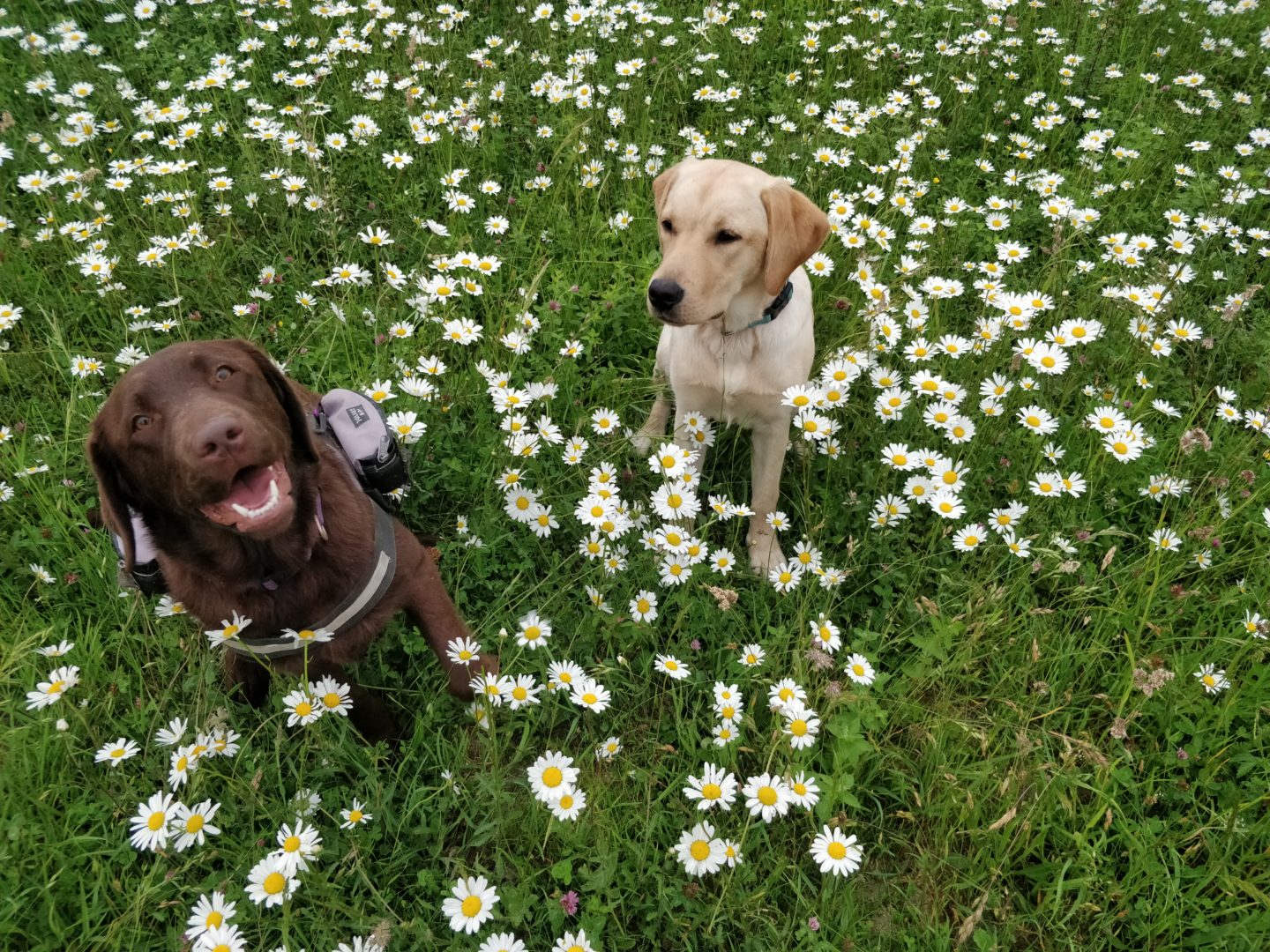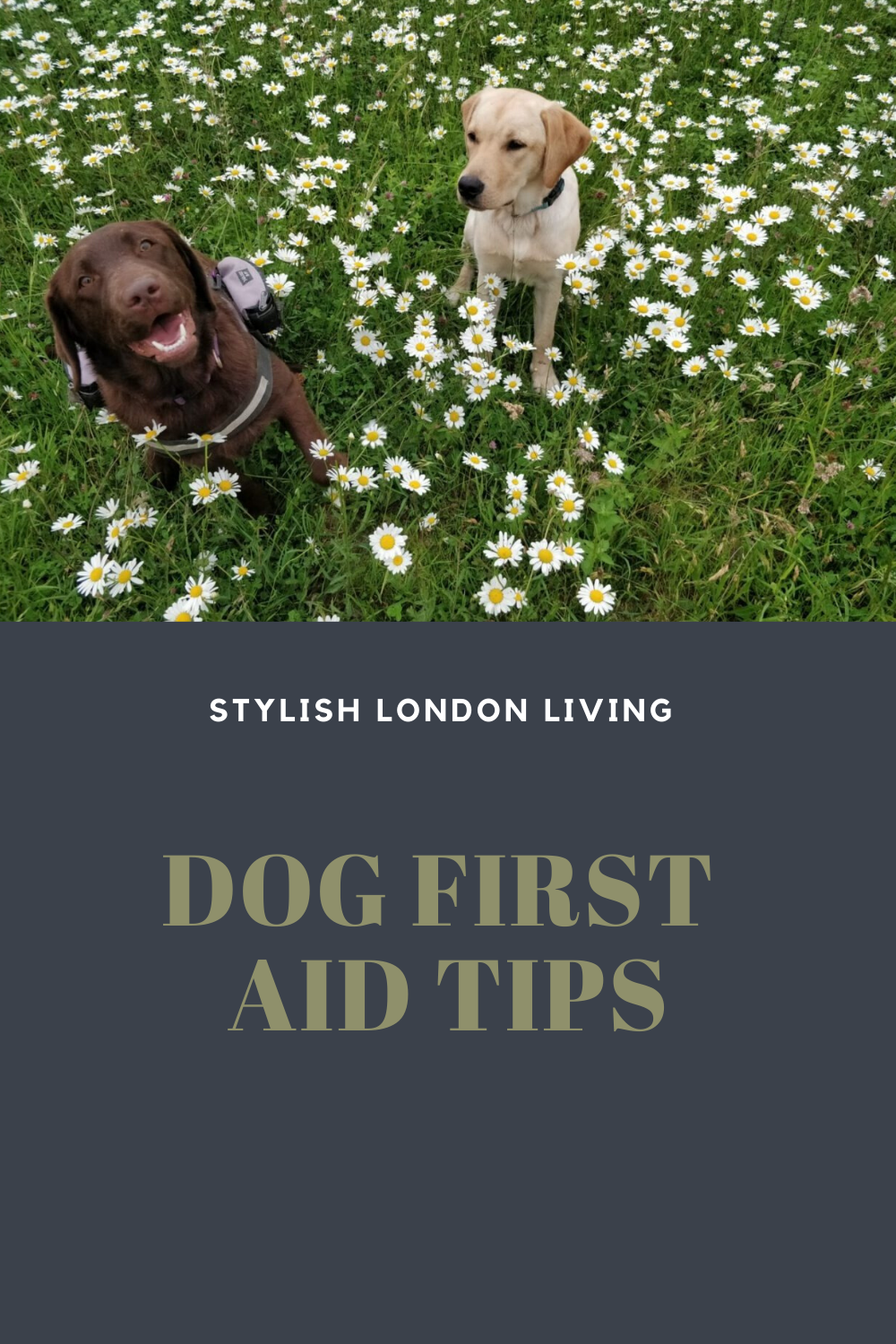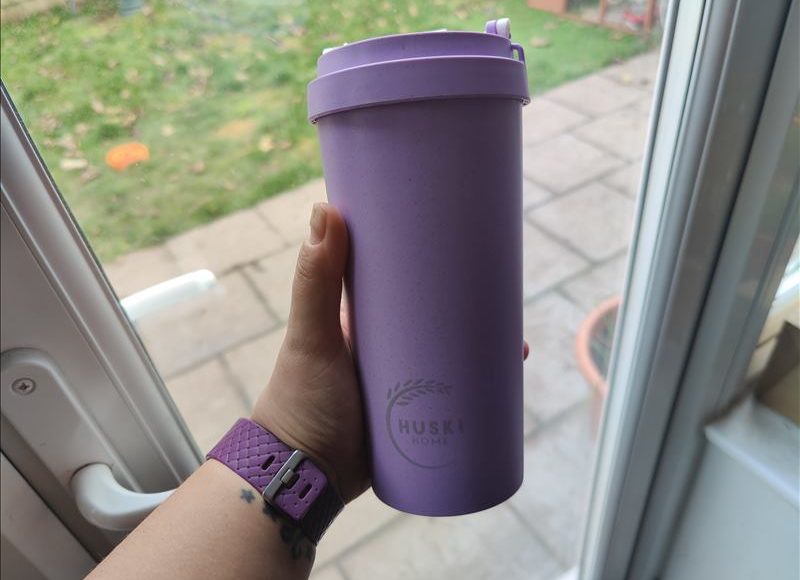Dog First Aid Tips

I have always had dogs in my life. For as long as I can remember my parents have had dogs, mostly golden retrievers and labradors, so when I moved back to Kent from London and started working from home it was an easy choice to make to get my very own canine pal.
So, along came Lexi – a beautiful chocolate labrador and then 18 months later we added a spritely yellow labrador, Roxi, into the mix. Check out their Instagram here: atailof3labradors.
Now, any dog owner will know that dogs can get themselves into scrapes – usually, only small ones, thank goodness – but you have to be prepared to administer required medical attention should your pooch need.
Dogs, like us, can read body language and the energy of the people around them. Sometimes just tuning into and trying to change their energy can make all the difference. I’ve even heard that it’s possible to heal dogs remotely and see responses to their physical, emotional and mental patterning.
If physical intervention is required, then here are some handy doggie first aid tips to help you in case an issue arises. These tips do not replace a conversation with or trip to your vet!
Doggie First Aid Kit
If you often go for long walks or have an accident-prone pooch it might be worth having a grab-bag of first aid bits and pieces with you. Some things you might want to include:
- Bandages
- Self-adhesive or crepe bandage
- Open-weave bandages
- Non-adhesive absorbent wound dressings
- Surgical sticky tape
- Cotton wool
- Sterile absorbent gauze
- Blunt-ended scissors
- A towel
- Your vet’s phone number
Stay Calm
It is so easy to become distraught if your dog has an accident, even a small one, but it’s important to keep a level head and stay calm because your anxiety will only make your dog nervous. Use a soothing, reassuring voice and steady movements.
If you don’t think you can remain calm try and find some support from a friend or other dog owner. When Roxi cut open a pad on one of her feet there was so much blood I was freaking out – despite it not really being that bad. I called my mum who came and helped me, having help made all the difference.
Bleeding
A common first aid situation will be bleeding. It’s easy for a dog to cut a foot or snag an ear whilst out on a walk. Pain in dogs feet can usually show as a limp so check if you see this. Keep the dog calm and quiet whilst you stem the bleeding by applying pressure with a towel. Your dog might not like having pressure placed on the wound but be gently insistent until the bleeding has stopped.
If you can, gently clean the wound and apply a tight bandage, applying another layer if blood seeps through. For places that you cannot bandage just press a pad firmly onto the wound and hold it in place. Do not stick adhesive materials to the dog’s fur. Do not leave a bandage on for more than 24 hours. If the blood doesn’t stop get to the vet straight away.
Poisoning
If you suspect your dog has consumed something hazardous firstly try and identify the substance – find packaging if you can so you can tell the vet what it is the dog has eaten. The same goes for if your dog has consumed any plants – try and identify the plant and call the vet immediately. Do not make your dog sick unless the vet says to do so. Do not attempt mouth to snout resuscitation as you may become contaminated yourself.
When Lexi was a puppy she ate a Hyacinthe bulb and luckily she was fine. My husband who was looking after her at the time called the vet and they suggested giving her activated charcoal which would soak up any poisonous chemicals in her system.
Broken bones
The most important thing when dealing with a broken bone is to avoid further injury by stopping your dog from running off. Stop any serious bleeding but do not apply a splint – it is painful and can make the injury worse if done incorrectly. Confine the patient for transport to the vet. If you are out driving, a boot cover may provide a secure makeshift stretcher.
Burns and scalds
I am lucky that my dogs have never been burned or scalded but often you hear about dogs which are rescued from fires with firemen going above and beyond to rescue animals, using oxygen for pets and I am so grateful I have not had to deal with such a horrific experience.
If your dog has been burned, just like with humans, run cold water over the area for 5 – 10 minutes, then contact the vet. Do not apply any creams to the burn. If you can’t see a vet right away you can apply a saline-soaked dressing to the area. Keep the patient calm and warm.
CPR for pets
I hope that I never have to use CPR on one of my dogs, but in case something untoward does happen every dog owner should know how to do it:
- Put the animal on their side
- Check that breathing has definitely stopped – hold a whisp of fur up to their nose/mouth and check for movement.
- Open the mouth, pull the tongue forwards and check for obstructions.
- Be careful not to get bitten when removing any material.
- If breathing does not start, open the airway by extending the head (nose pointing forwards).
- Hold the mouth closed and blow into the nose about 20 times a minute.
- If you cannot feel a heartbeat start chest compressions – just behind the front legs every second.
- Give two breaths into the nose for every 15 compressions of the chest.
For more information about first aid for your dog, there are lots of online resources such as The Blue Cross and PDSA.






